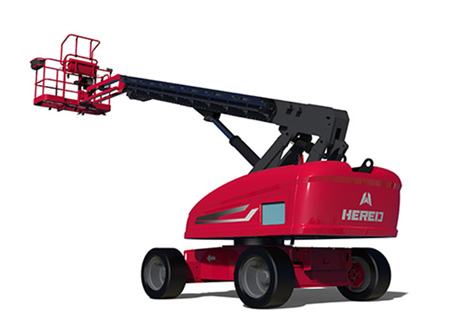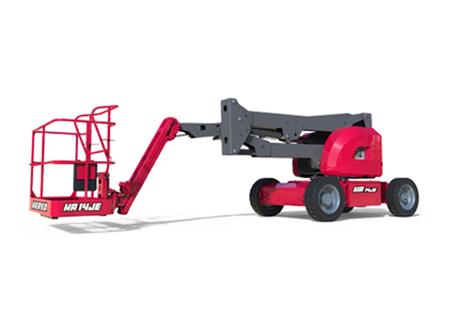History of Boom Lifts
Boom lifts are popular pieces of aerial equipment. Individual contractors and companies use them for many tasks. Boom lifts are known by various names: cherry pickers, aerial work platforms or AWPs, aerial devices, elevated work platforms or EWPs, and mobile elevated work platforms (MEWPs). All are different names for boom lifts.
Boom lifts allow workers to access high places and many models have special equipment for specific jobs, such as frames for carrying window panes. Many boom lifts are relatively easy to use, so they can usually be operated by one person alone. models up to 60 feet can easily be towed on the motorway to any site where they are needed. This article will guide you through the history of boom lifts and how to operate them safely.
The history of boom lifts
In 1951, Walter E. Thornton-Trump, nicknamed Ted, invented the boom lift to make working at heights easier. Thornton-Trump called the boom lift a giraffe, but the name cherry picker still exists because people often used it to pick fruit, including cherries, from tall trees in orchards.
Why did boom lifts become a popular way of harvesting fruit? Climbing ladders can be difficult, especially if you are carrying heavy baskets and other equipment. What's more, ladders can be dangerous on uneven ground. Using a boom lift is safer, more efficient, and easier to reach high ground.
Some boom lifts can even move up and over obstacles just like a crane. This is ideal in situations where you cannot place the equipment directly under the object you need to reach. By 1958, just a few years after Walter E. Thornton-Trump invented them, boom lifts were appearing on fire engines to help firefighters fight fires faster and with less risk than using ladders. Soon thereafter, workers began using boom lifts to repair overhead cables, maintain telephone lines, mine, change light bulbs on street lights, and any other task that might require reaching around objects.
Special trucks known as boom trucks carried many of the first boom lifts, including those on fire engines, and Mr. Thornton-Trump patented his invention in the early 1960s, calling it an "electric boom structure" and a "wire and lifting device for construction workers". Initially, safety regulations did not exist in most cities and states. Today, there are safety rules for all types of jib cranes and operators must be specially trained. If someone says they are licensed to operate a travel tower, then they are using another name for a boom lift.
How to operate a boom safely?
Preparation before operating a boom lift must be carried out. Proper training and regular maintenance. A moving boom lift should be kept at least 10 feet away from energized power lines or other hazards. When calculating loads, consider the total weight of workers, tools, and equipment. Use protective equipment such as helmets, harnesses, reflective vests, goggles, face shields, and gloves. Do not use boom lifts in high winds.
Choosing the boom lift you need
If you are not sure what equipment you need, ask us for help. Also, make sure you check the OSHA regulations for the equipment you choose. Don't override safety devices and make sure you set the brakes on hills or slopes. If an accident occurs, you discover a safety hazard, or you decide to use a different type of cantilever lift, you should retrain your workers.
Use
Always check the equipment before each shift Check the oil and other fluid levels, wheels, batteries, controls, brakes, and steering before each shift. Fix any problems before you attempt to use the equipment. In addition, ensure that workers act with caution and know-how to handle hazards.






